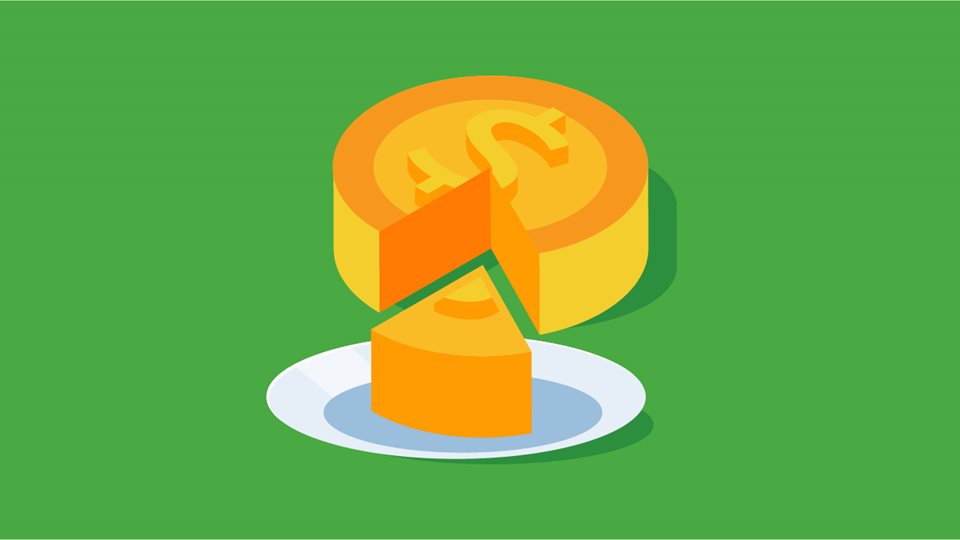Terms and basic concepts you should understand when seeking dividend-paying stock.
How to Start Investing in Dividend Stocks
By:September 15, 2019

Ready to Enhance Your Investing Skills?
Get free essential insights to advance your investment journey.
Access the Quickstart PDFMany people invest in dividend-paying stocks to provide income during retirement. If you’re attracted to the idea of annuities because of the regular cash flow they provide and because it’s guaranteed income, you might consider stocks that pay dividends as well. Dividends aren’t guaranteed income, but companies usually are quite reluctant to cut them.
How Dividends Work
When companies generate profits, they have several ways to use those earnings. Among the options, they can
plow the money back into the business to generate more growth;
- pay off debt;
- invest in equities (including buying back their own stock), property, and other assets;
- keep the earnings as cash; and
- distribute dividends to shareholders.
Dividends are paid for each share of stock you own. The payouts are usually quarterly, although companies sometimes issue special, one-time dividends. If you own 100 shares of a stock that pays quarterly dividends of 50 cents a share, you would receive $50 each quarter for an annual dividend of $200.
Benefits of Dividend-Paying Stocks
Dividends have other benefits besides providing income during retirement. They add to total return, especially when you reinvest the dividends to buy more shares. According to Hartford Funds, from December 1960 to December 2018, 82% of the total return of the S&P 500 index (which comprises 500 large companies) is from reinvested dividends and the power of compounding.
Reinvesting is one of BetterInvesting’s principles, which you can learn more about through our sample online education, stock studies, and publications.
Among the other benefits of dividends:
- They provide return when stock prices aren’t increasing. This dividend payout often helps provide stability to stocks as a result. They can provide diversity to a portfolio of more volatile growth stocks.
- They provide confirmation of the company’s financial condition. Companies might engage in fraudulent accounting practices, but they can’t fake dividend payments.
- You have more flexibility with stocks that pay dividends than buying an annuity where you’re locked into multiyear terms.
- Dividends that are "qualified" (by meeting IRS standards) are generally taxed at lower rates.
Defining Yield Stocks
Many stocks pay dividends, but not all stocks are considered “dividend stocks” or “income stocks.” In general terms, dividend stocks are ones for which the dividends are a primary reason for ownership. The stock price often is stable or might increase slowly.
Investors tend to think of dividends in terms of the dividend yield. That’s the ratio of a stock’s annual dividend to the current stock price; because the yield is based on the stock’s current price, the yield varies from day to day. As a reference point, the average dividend yield of stocks in the S&P 500 often ranges between about 2% and 4%. You can find stocks yielding 4%-6% or more — in Evaluating Dividend Stocks, we discuss issues to consider when yields are that high.
Companies reconsider their dividends every quarter. When a company’s board of directors approves a dividend increase, it signals confidence in the company’s future earnings growth. Some companies have managed to steadily increase their dividends over decades.
Some companies do offer a combination of growth and dividends. As detailed in the article How to Find Good Dividend Stocks, we'll detail how to find strong, growing companies with dividends that can provide steady income.
Getting Started With Dividend Investing
You have three main options for investing in dividend stocks:
- individual stocks
- dividend exchange-traded funds
- dividend mutual funds
Investing in individual stocks that pay dividends can be a low-cost option because you won't have to pay the management fees associated with ETFs and mutual funds. One way to build long-term wealth via dividend-paying stocks is through dividend reinvestment plans, also called DRIPs.
With DRIPs, instead of dividends being paid as a check or deposited directly into your brokerage account, the money you would receive is automatically rolled into buying more shares of the dividend-paying stock. Many brokerages offer DRIP investing, and some companies allow you to set up a DRIP program directly with them. DRIP investing plans in many cases might be commission-free or offer discounted prices to buy shares, so DRIPs can be a lower-cost way to build ownership in a company.
Adam Ritt, Former Editor-in-Chief of BetterInvesting Magazine, joined BetterInvesting in 2002 as the managing editor of BetterInvesting Magazine and was overseeing the content creation and production of all BetterInvesting print and online publications. His BetterInvesting Magazine articles frequently were reprinted in various publications. Adam’s article, “World of ADRs," is currently being used for a 400-level accounting course at the University of Washington

